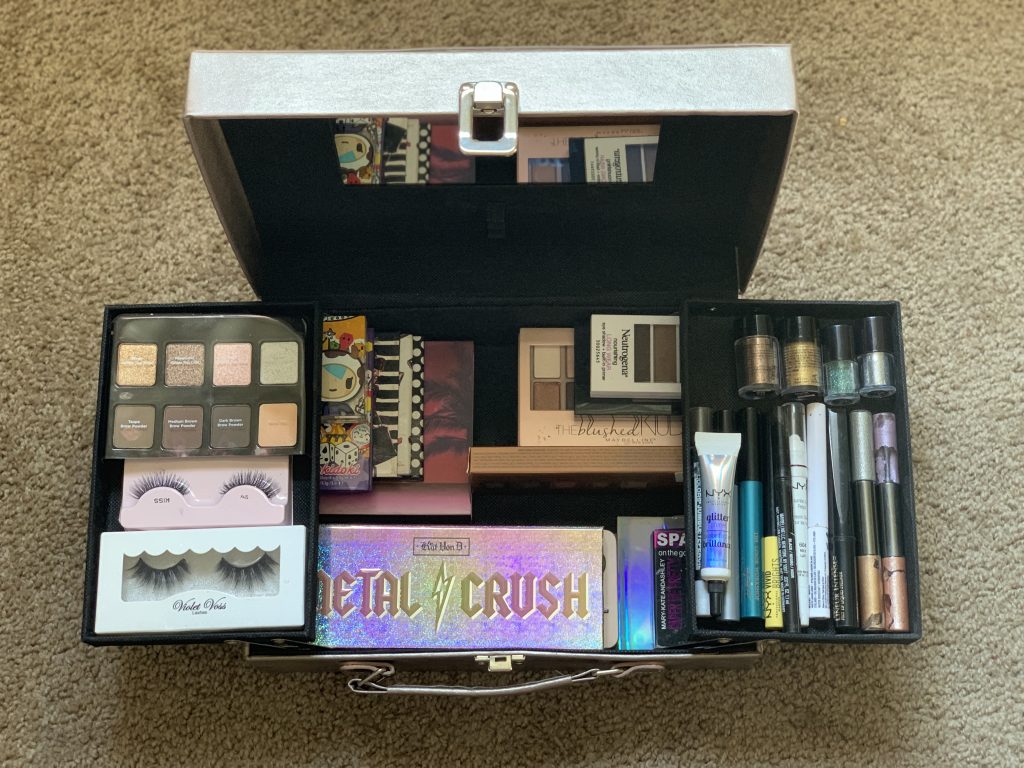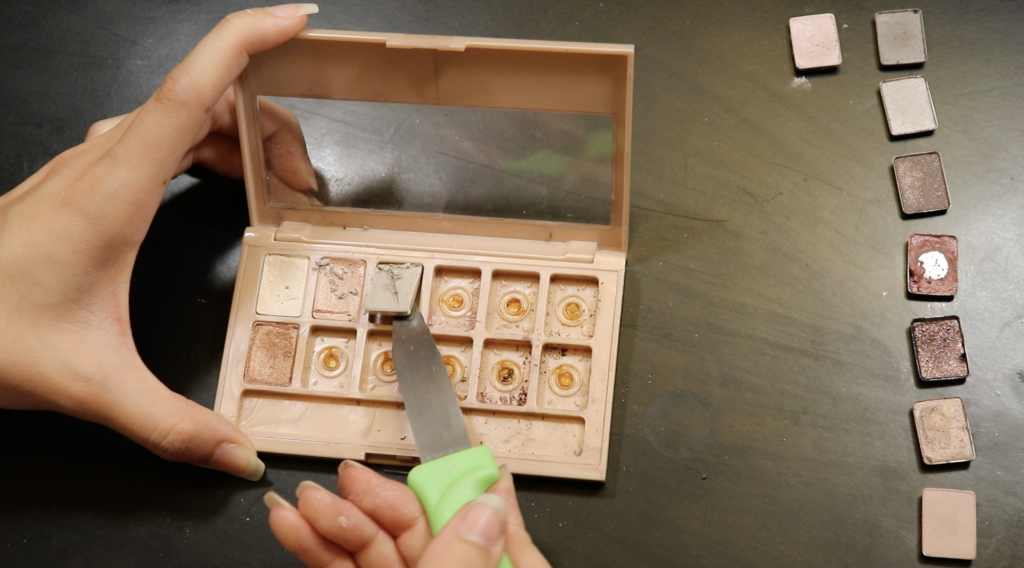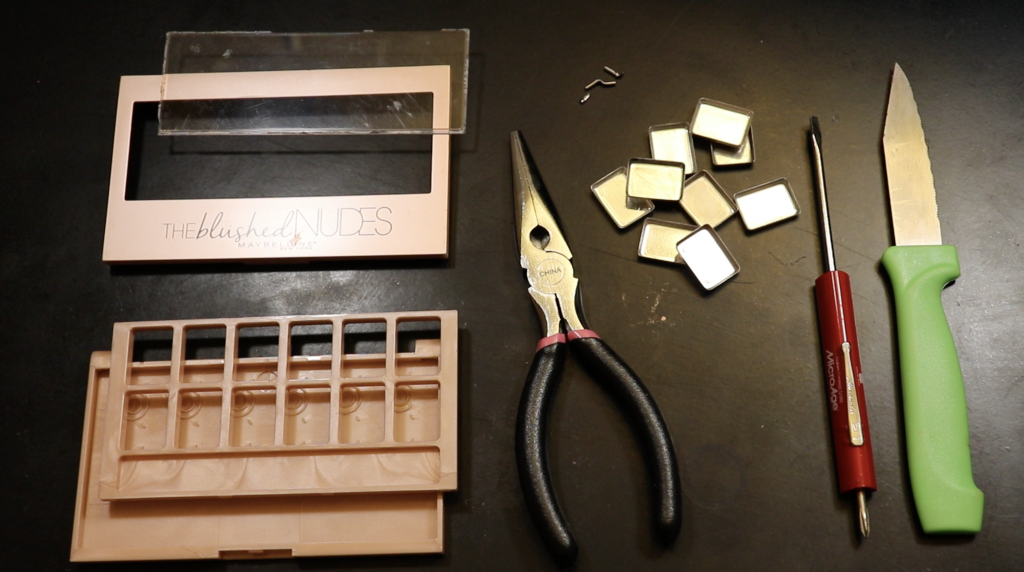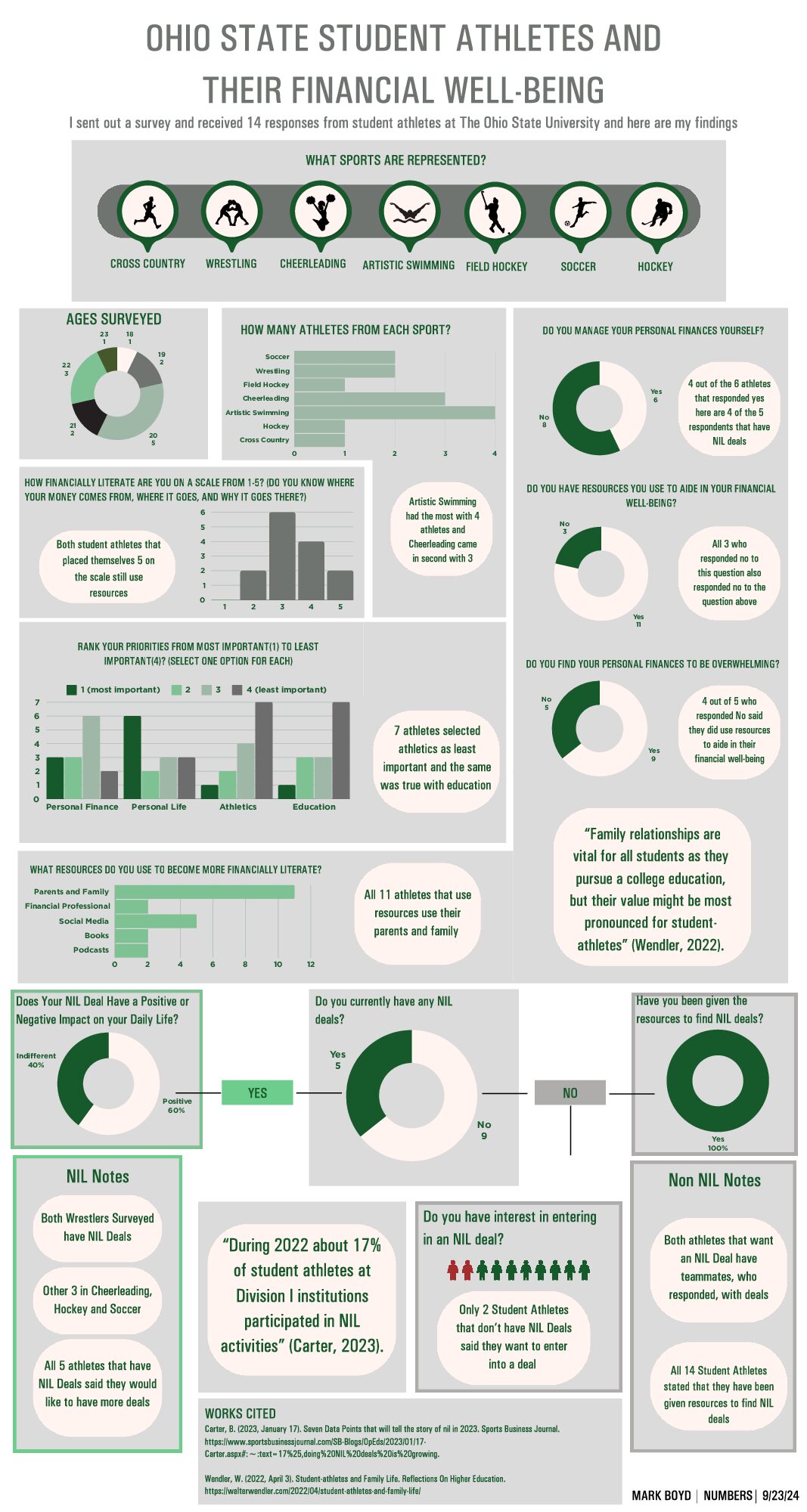by Carley Giles | Design 5200 | September 22, 2019

Taking care of ourselves is hard work. We care for everything from diet and exercise, our mental health, down to how we look. Although this is not as vital for our overall wellbeing, it still plays a role in our everyday life. The results from my survey showed that 65% of participant’s wear makeup every week, with over a third of them wearing it daily. However, our desire to look groomed to socially acceptable standards does not come without consequences to the environment. So many bottles, brushes, tubes, palettes, packages, etc. are use for these everyday routines and these products are likely to end up in landfills at the end of their lifecycle. In this project I am looking to find a way to combat this waste. There is a need for a more sustainable, if not a zero waste, solution for the self-care/beauty industry.
Due to the influx of social media use and influence, the beauty industry has been able to grow to be a 500-billion-dollar industry within the past couple of years. It is expected to keep growing at a high rate. Tons of beauty products are sold every day world wide and within this comes over 100 billion units of packaging (Biron, 2019). The question is, where does all this go at the end of its life cycle? DoSomething.Org claims that, “The EPA estimates that 75% of the American waste stream is recyclable, but we only recycle about 30% of it.”(“11 Facts About Recycling”).

I looked into my own collection of beauty products. My collection contains 235 products total and of these products 166 of them contain some sort of plastic. This equates to a total of 70% of products containing plastic. One of the issues with cosmetics, since most tend to be smaller products, is that companies don’t imprint the plastic label, telling what type of plastic it is made of. This is important in knowing whether or not it is a plastic that can be easily recycled.
Some cities don’t recycle all types of plastic. Knowing this, I decided to find out Columbus’s processes by going to their official website. The City of Columbus website provides information on events happening around the city, different laws and protocols of Columbus, a list of elected officials, etc. What I was interested in was the “waste wizard” tab on the website. This allows users to search any household item in order to see how to properly dispose of it based on the city’s standards. This is in that, not all cities offer recycling for all types of materials. Some cities only recycle certain types of plastic. I used “Waste Wizard” to search how to dispose of cosmetics. What I found was that Columbus categorizes cosmetics as a hazardous waste (“City of Columbus”). Other hazardous waste items include batteries, paint strippers, bleach, spray paint, etc. It doesn’t provide an explanation as to why cosmetics is categorized in this section, however, they do offer drop off stations to keep these products out of landfills (“Household Hazardous Waste: SWACO, OH”).
The majority of cosmetic packaging is made out of some type of plastic. Many products also contain mixed materials that are not easily separated. Some of these include makeup brushes, bottles with pumps, and eye shadow palettes. I recorded myself disassembling an old eye shadow palette that I do not use anymore. This, in total, took me over an hour to fully disassemble and clean out. It’s hard to think that many consumers, if any, would spend a considerable amount of time disassembling something of such just so that they can properly recycle it, especially when it is a smaller piece of material and is so easy much easier to just throw in the garbage.



Convenience is one of the larger issues in todays society of consumerism and waste. Products now are made to be as convenient as possible. For example, it is much more convenient to purchase single use plastic than to haul around various containers and utensils for refills and reuse. Not only that, but the convenience transfers into the end of the life cycle. It is much easier to throw products out than to spend time cleaning them out, for preparation of reuse.
All in all, a large majority of cosmetic products are made with plastic. However, plastic is not the most sustainable material of choice. So why do companies continue to use it? Leanne Tarantelli, a licensed managing esthetician for Merle Norman, explains in her interview that plastic use is a way to keep a companies cost down in order to keep sales up and successfully compete with other brands. Plastic is cheap, hygienic, light weight, durable, versatile, and recyclable (if the consumer decides to take this step) (Schoo, 2017). These are other reasons it is such a popular material for cosmetics. My survey revealed that when purchasing these beauty products, the highest rated aspect of importance when making purchasing decisions was the quality of formula, this meaning how well the product works and applies. The thing people rated least important was taking into consideration the materiality of the packaging. This may be viewed as one of the least important aspects but may actually be one of the most important, given that we are looking at the relationship between cosmetics and sustainability. Why is there a lack of care here with users? I think this brings about opportunities to see how we can get people to care.
Either companies need to make a shift, and find other more eco friendly materials to replace plastic, or they need to provide easier ways to recycle these materials. For example, this may include printing the type of plastic labels on all products, no matter how small, or designing mixed material products in a way to where they are easy to take apart for proper recycling. If companies are unwilling to change their ways, the consumer must be the one willing to make the change. The top two leading causes people claimed prevented them from being more sustainable were money and lack of knowledge. Consumers must be able to weigh out their values, seeing if they are willing to pay more for something more sustainable. The more people willing to make this choice, the more it will drive sales, the more it will force companies to jump on the “sustainability train”. There also needs to be a shift in education. It is astonishing to see how little people know about recycling, how it works, what can and can not be recycled, etc. If people were more knowledgeable, more things would be properly recycled.
There are a lot of problems playing together, preventing everyone in the system from being more sustainable. Much of this is a cause and effect cycle. The question is where to start and what changes would be most beneficial in changing this cycle as a whole.

- Biron, B. (2019, July 9). Beauty has blown up to be a $532 billion industry – and analysts say that these 4 trends will make it even bigger. Retrieved from https://www.businessinsider.com/beauty-multibillion-industry-trends-future-2019-7
- City of Columbus. (n.d.). Retrieved from https://www.columbus.gov/publicservice/Refuse-Collection/
- Household Hazardous Waste: SWACO, OH. (n.d.). Retrieved from https://www.swaco.org/195/Household-Hazardous-Waste
- Schoo, R. (2017, February 17). Why do we need plastic packaging? Retrieved from https://www.bpf.co.uk/packaging/why-do-we-need-plastic-packaging.aspx
- 11 Facts About Recycling. (n.d.) Retrieved from https://www.dosomething.org/us/facts/11-facts-about-recycling



